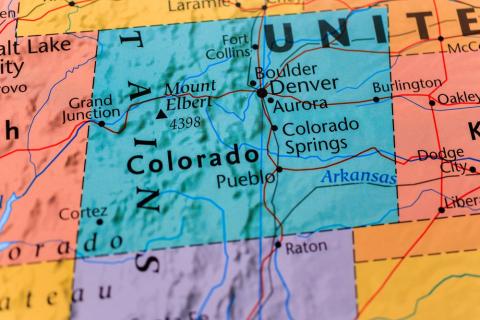The Colorado Rockies are home to many stunning features, one of which is the Continental Divide, which separates the watersheds of the Pacific Ocean and Atlantic Ocean. Now, while the Continental Divide is well-known, the state is also becoming known for another type of division that’s stunning for a very different reason.
Every 10 years, the Colorado Reapportionment Commission meets to divide up the state into districts based on the U.S. Census. They are charged with setting boundaries, substantially equal in population, for the state’s 35 State Senate and 65 State House districts.
In 2011, the last time Colorado’s districts were redrawn, they were drawn in such a way that the party receiving 55% of the vote in the 2014 elections ended up with fewer than half of the seats in the House of Representatives.
Why?
Through a process called gerrymandering, by which political partisans rig district boundaries to favor one class or party over another. Drawing districts based exclusively race or ethnicity is illegal, but up to this point, drawing them based on political party composition is allowed, though frowned upon by the Supreme Court.
The upshot of this partisan gerrymandering in Colorado? Only one of the state’s seven congressional districts is truly competitive, and none of those seven districts have changed party hands this decade. Of the state’s 65 State House districts, only three have changed party hands this decade.
These rigged elections ruin democracy. Safe seats mean legislators only have to worry about appealing to the partisans who nominate them. Independent voters – roughly one-third of the Colorado electorate -- get left behind. Polarization and partisan vitriol ensues. The two parties almost never work together to tackle big anymore.
Voters and representative democracy lose out.
Fortunately, there is a group taking on gerrymandering in Colorado. Fair Districting Fair Elections (FDFE) is a nonprofit organization dedicated to bringing more competitive elections to the state. FDFE seeks to make Colorado the national leader in ending partisan gerrymanders and promoting redistricting reform.
FDFE believes that redistricting should be done by an independent commission consisting, to the extent possible, equally of Republicans, Democrats, and non-major party members. It also believes that passing maps should require a super-majority of the commission’s members, and that maps should be drawn by nonpartisan, professional staff, instead of political operatives.
To this end, Fair Districts Fair Elections plans to run two initiatives on the ballot in 2018: one to reform congressional redistricting and the other to reform legislative redistricting. FDFE’s efforts are backed by a bipartisan group of Colorado leaders, including the League of Women Voters of Colorado.
“Our vision for Colorado is congressional and legislative districts drawn using neutral, good-government criteria that promote more competitive elections. We want to end the rigged elections that promote only the interests of one or the other political parties,” said Kathleen Curry, a former state legislator and FDFE board member who affiliates with neither political party.
She added, “We believe the end-result of our initiatives will be the election of legislators who are more willing to work across party lines to achieve consensus on solutions to tough problems.”
FDFE is a proud member of the coalition of reform organizations behind "Unrig the System," an event aimed at reforming Colorado politics. Find out more by watching the video below or by visiting unrig.it.
Photo Credit: Alexander Lukatskly / shutterstock.com
